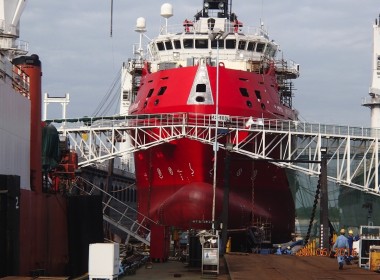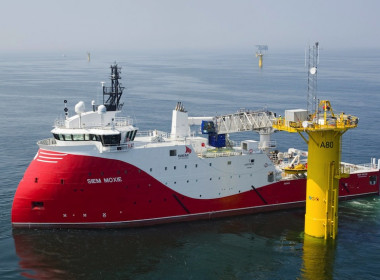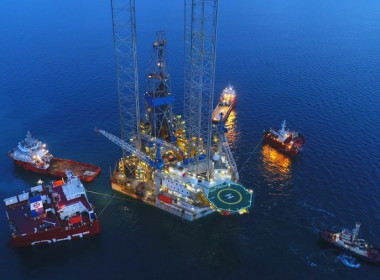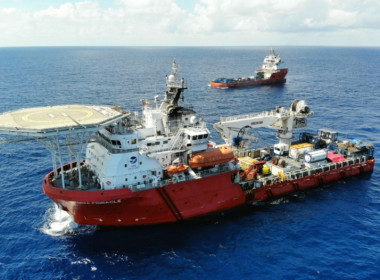COLUMN | Battle of the batteries: OSVs go plug in [Offshore Accounts]

“Batteries not included” are words that have ruined a million Christmases. Increasingly, however, containerised, lithium-ion battery packs are now included on OSVs to reduce fuel consumption and provide back-up power. Seacor Marine’s CEO John Gellert has led the charge and added battery power to Seacor’s PSV fleet since 2018, when it first upgraded Seacor Maya and a trio of modern sister units, Seacor Azteca, Seacor Viking, and Seacor Warrior. This battery investment culminated in a deal earlier this year when Seacor took full ownership of another eight UT771 design PSVs, six of which were also fitted with battery packs.
At the same time, Maersk Supply Services and Ørsted have announced the development of what is effectively an electric socket mounted in a floating buoy, so that OSVs can tap renewable power directly from source when standing by in a wind farm. A trial offshore power connection for completely emissions-free operations is in the works.
Who said water and electricity don’t mix? Youtube footage of self-electrocution in the name of science here.
Seacor’s shocking deal, financially
Seacor’s acquisition is especially complex financially, as per the details here – Seacor is buying full control from Cosco of a joint venture, which owned the eight vessels (Seacosco Murray, Seacosco Congo and six others) that had been abandoned by their buyers at Chinese shipyards in the downturn. Seacor decided to buy them with funding from the yards and to upgrade them with battery packs from Canadian company Corvus to give them technological differentiation.
The original shipyards are still owed US$105 million and Seacor will only pay Cosco the aggregate purchase price of US$28 million for the remaining 50 per cent equity interest in the ships over four years, culminating in a payment of US$13.7 million in 2024. Good things come to those who wait, clearly, with six per cent interest, in Cosco’s case. Simple maths tells us that the deal still values these vessels at just under US$20 million each (US$7 million of equity and US$13 million of debt per vessel), which is bold and brassy when compared to the US$8 million each that the creditors of Hermitage Offshore (here) paid for that company’s similar specification, slightly older, but non-battery-equipped PSVs earlier this month.
I suspect this massive cost problem is why the Seacor deal with Cosco is so convoluted.
Keep the load in the sweet spot
But technically the battery technology supplied by Corvus to Seacor is really simple. A new standard has been set. The ships have battery banks, mounted on board in cooled containers, which are charged and discharged via the switchboard. The batteries modulate the energy use, so that the vessels’ diesel electric systems always operate in their most efficient sweet spot, between 75 per cent and 80 per cent of the maximum continuous rating.
When power demand is high, the batteries supply additional power to the PSV, so that extra generators do not have to be started for transient load. When power demand on the diesel-electric system is lower, the generators recharge batteries with the surplus power, enabling the generators to run constantly at an efficient load. Seacor estimates fuel savings of around 20 per cent for the PSVs using this system compared to standard diesel electric units.
The batteries mean that the ships can operate with zero emissions in port, which is a major advantage from an ecological point of view, as the dangers of particulates from diesel engines in urban areas become a health concern. In port, the vessels can operate from shore power connections too.
The next stage in industry evolution
This move towards electrification is the next stage of a long-term series of incremental gains which have driven up efficiency in the OSV industry. In the beginning, there was just diesel mechanical. OSVs ran two big medium-speed diesel engines, which powered their two propeller shafts, and separate diesel generators powered the other ship’s equipment, like the bow thruster (singular) and cargo systems.
With low oil prices after the crash of 1986 (here), customers weren’t much concerned about fuel economy because diesel was cheap, and the entire industry was in shock with multiple bankruptcies of OSV owners and negligible investment in new vessels and new technology for a decade, so charter rates were dirt cheap too.
UT704 design anchor handlers ruled the waves. To conserve fuel, some exotic anchor handlers were built with four diesel engines so that they could operate with only two running when working at low load, but this just multiplied maintenance costs and made vessels more expensive to build. Engineers hated all the overhauls and work involved.
Ronnie Sudjaca, owner of now liquidated Pacific Richfield Marine of Singapore, was a great believer in the mother/daughter four-engine configuration. It proved a dead end technically, and Pacific Richfield was one of the first companies to go bankrupt when the next great industry recession began in 2015.
Diesel-electric becomes industry standard
As client demand for dynamic positioning grew and as the oil price climbed in the early 2000s, owners increasingly moved to using shaft generators taking power from the main engines to power the growing number of thrusters required for station keeping in harsh environments and deep-water. This still left a single point of failure if one of the main engines broke down, however.
The benefits of diesel-electric quickly became clear (see Caterpillar’s sales pitch here) – increased reliability for DP operations, lower fuel consumption, and quieter ships with fewer vibrations.
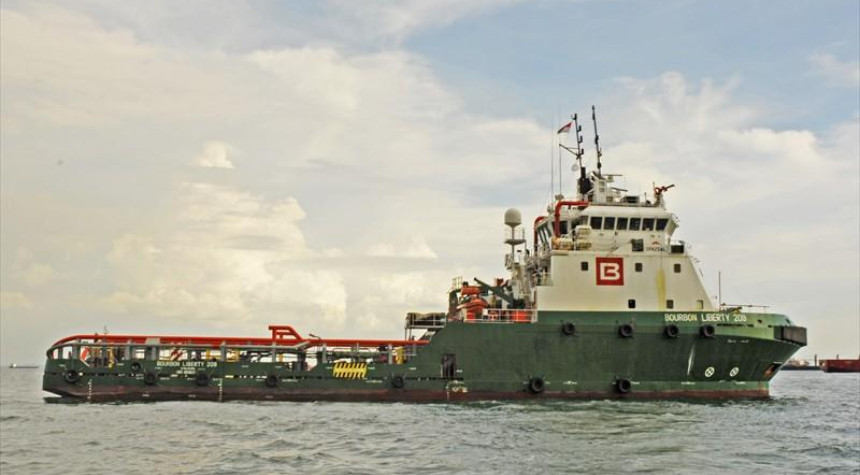
It was Bourbon internationally, and Rigdon Marine in the US (which was founded in conjunction with Bourbon, then later bought by Gulfmark), who took the industry to the next level by ordering large series of identical diesel-electric vessels, especially the Bourbon Liberty series. Cue howls of outrage from readers who believe that their company was the pioneer and the leader (please direct your anger by email to [email protected] – I love being contradicted). This established diesel-electric as the standard for PSVs.
One of the reasons why Tidewater, in particular, is selling scrapping so many older PSVs (here) is that the non-diesel electric units (like Highland Laird and Highland Bugler, here) cannot compete on fuel consumption, as we will see from the remarkable example of Hermit Power below.
Even anchor handlers go hybrid
Anchor handlers with their massive power requirements were slower to move to hybrid systems where diesel-electric generators supplemented the main diesel engines. Bourbon Orca was delivered in 2006, to an Ulstein design from Ulstein Verft shipyard with a patented X-bow and diesel-electric propulsion (here), showing that it wasn’t just PSVs which could benefit from diesel-electric systems in offshore.
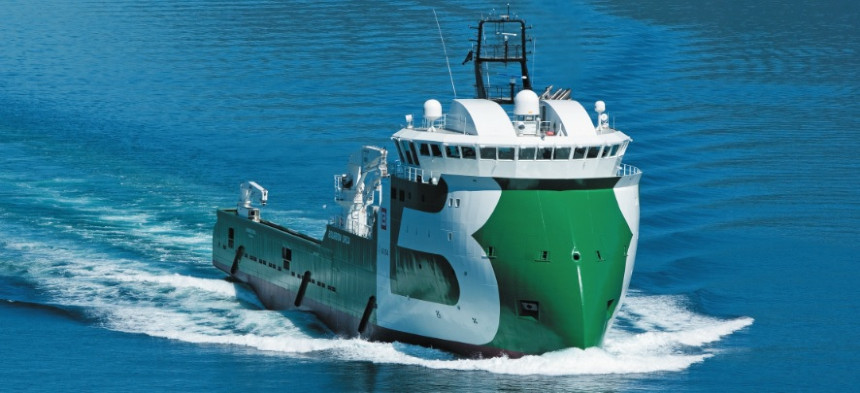
Ulstein designed Bourbon Orca to be equipped with two azimuth propellers aft and one retractable thruster forward. Instead of having a large diesel engine on each main propeller, two electric motors were connected in series on each unit, in order to be able to use a low-voltage electrical system.
Zeus and Hera showed the way
Soon (here) the 2009-built AHTS Olympic Zeus and sister vessel Olympic Hera of the 260-tonnes bollard pull Ulstein A122 design were demonstrating fuel savings of up to 70 per cent compared to similar conventionally powered anchor handlers, depending on the mode of operation, the owners claimed. Combining the medium-sized diesel-mechanical and diesel-electric systems into one large hybrid propulsion system both took up less space and proved to be less expensive to purchase for owners than a large diesel-electric system.
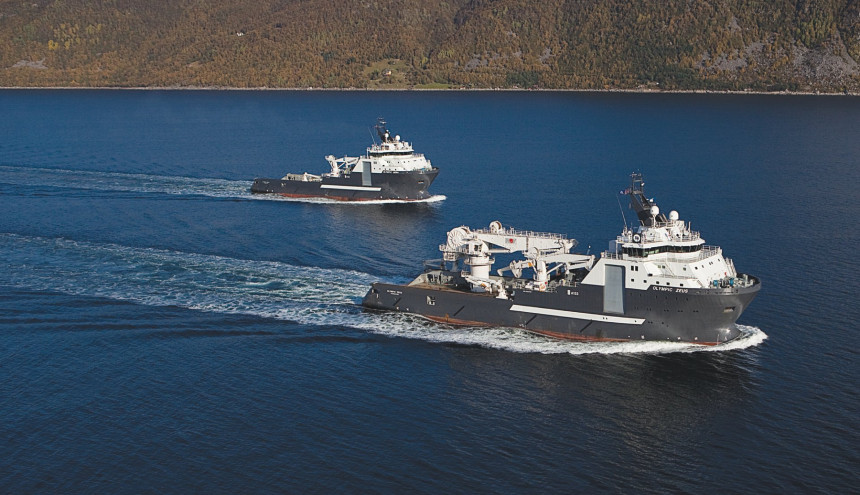
These hybrid diesel-electric and diesel mechanical systems have now become the norm for large anchor handlers. Maersk Master and its five 250-tonne bollard pull sister vessels, which were delivered between 2017 and 2019 from Kleven shipyard in Norway, demonstrate the trend. These AHTS are powered by five medium-speed Wartsila engines with a total output of more than 17,000 kW, configured in a flexible hybrid propulsion system, with controllable-pitch propellers and fixed-pitch thrusters.
When low-load operations are required, the vessel’s hybrid propulsion system allows it to switch to 100 per cent diesel-electric operations, for maximum fuel efficiency. Of course.
Shane Guidry gives chase
But Seacor has competition in the battery space, especially in the Gulf of Mexico.
Not content with naming himself CEO of the company until at least 2027, Harvey Gulf boss Shane Guidry has just announced here, that, with the tenacity of the Energizer bunny, he will be pursuing Seacor and intends to make his company the largest operator of battery-powered PSVs in the world! Game on, Mr Gellert!
Trying tri-fuel
Harvey Gulf has now become the first and only company in America to own and operate a tri-fuel vessel, powered by LNG, diesel and battery power. And I thought Seacor’s battery ships were high capex…
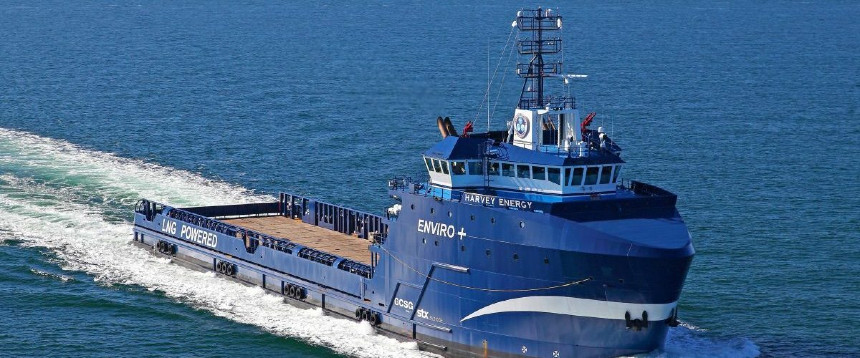
Last month, Harvey Gulf completed the retro-fit installation of a Wartsila battery-power system on the duel fuel PSV Harvey Energy. Guidry added that Harvey Gulf also started installing a GE battery-power system on the PSV Harvey Champion in September.
Four more dual-fuel LNG platform supply vessels (PSVs), three conventional PSVs, and one dual-fuel LNG multi-purpose subsea support vessel in the company’s fleet are also due to receive retrofitted battery packs in Harvey’s great battery-buying bonanza.
Island Offshore and Lundin take the plunge
Island Offshore in Norway also converted two of its LNG dual-fuel vessels to run on battery power this summer, plus a third which was diesel powered alone – see here. All three vessels are chartered by Lundin Energy in Norway on long-term contracts, so there is an economic underpinning to the conversion, which has perhaps been missing in some of the other installations. Island Offshore also fitted shore power connections, and gave some indication of the economics of the installation.
Don’t talk about the money
System integrator Høglund Power Solutions says that its 875kWh battery pack and a new power management system on Island Clipper are expected to cut fuel consumption by up to 20 per cent, which Island estimated at around 700,000 litres of diesel per year (under two cubic metres per day) and that the batteries would reduce CO2 emissions by 2,000 tonnes a year. The company stated that running engines at a more constant load also allows the NOx after-treatment to work more effectively.
Unfortunately, with diesel prices at less than US$400 per cubic metre, even twenty years of saving 700 cubic metres per year (i.e. one full bunker loading) doesn’t justify a premium of US$10 million between a Hermitage pure diesel-electric PSV and a Seacor battery-augmented vessel. Indeed, the figures from the Hermitage vessels operating in diesel-electric mode suggest that the fuel savings for batteries may have been overstated.
Impossibly low consumption
In a press release from 2014, the captain of the PSV now known as Hermit Power (then known as Blue Power) reported here that when Blue Power reported the fuel consumption for a North Sea transit mission to their charterer, the reply was that the numbers must be wrong. The consumption was simply too low:
“Our charterer reported back to us that it’s not possible to be that fuel efficient, compared to similar ships,” says Edvard Dahlén, captain on this transit. “We made eight knots and consumed less than 200 litres per hour, which is extremely little. This vessel is set up with two different engine sizes. On this occasion, only the smallest engine was in use. This was a rare opportunity in which we were allowed to keep the speed down to eight knots, and we decided to test how little fuel she is able to use in transit.”
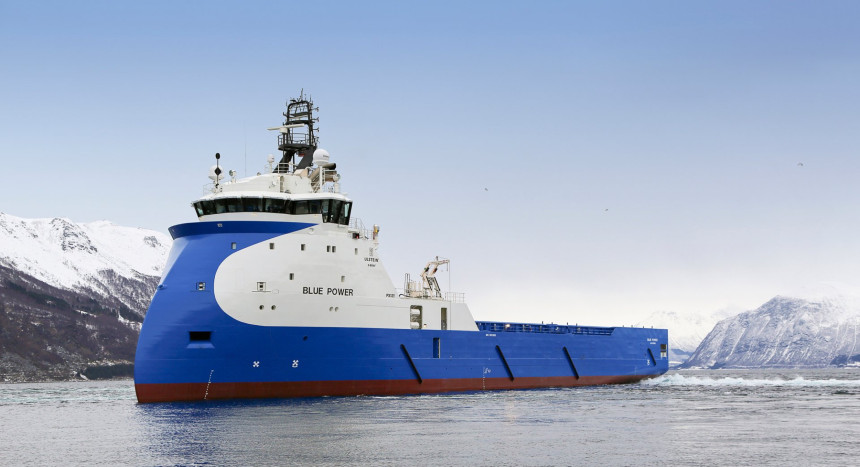
Two hundred litres an hour is less than five cubic metres per day. Undoubtedly, the sea was flat calm and the new vessel was probably empty of cargo, but a 20 per cent saving on such low consumption doesn’t justify a battery retro-fit from a commercial point of view.
LNG as a dead end in offshore?
The fact that both Harvey Gulf and Island Offshore are converting their LNG-powered offshore vessels to battery power reminds us that LNG in offshore has become something of a niche, especially now MGO prices are so low. The higher capex is not sufficiently offset by the lower cost of LNG compared to marine diesel.
Whilst Singapore, Norway and Harvey Gulf itself in Louisiana now offer LNG bunkering facilities, LNG fuelling stations remain scarce elsewhere in the world. The large relative size of the LNG tanks in relatively small OSVs means that deadweight and cargo capacity have to be sacrificed for operating and emissions benefits which cannot be obtained operating in many areas of the world where LNG is not available in the supply base or at the anchorage.
Eveready to embrace change
As concerns about emissions grow and as charterers like Equinor in Norway, and all the windfarm operators, who want to walk their own talk on electric power, insist in their charter contracts that vessels are fitted with at least mandatory battery backup to load smooth diesel-electric vessels, we can expect new PSVs and windfarm support vessels to be fitted with them as standard, and probably increasing numbers of vessels to be retrofitted. As the technology becomes more widespread, we then can expect to see economies of scale drive costs down further.
This downturn, unlike the one of the late 1980s and early 1990s, is seeing massive technological change across the industry. This increases the risk of technological obsolescence for vessels which were built with the wrong equipment. The next ten years will, I suspect, be like Christmas for Corvus and the battery manufacturers. Industry change can be a real Energizer.


![COLUMN | Battle of the batteries: OSVs go plug in [Offshore Accounts]](https://www.bairdmaritime.com/wp-content/uploads/MEPS-860.gif)
